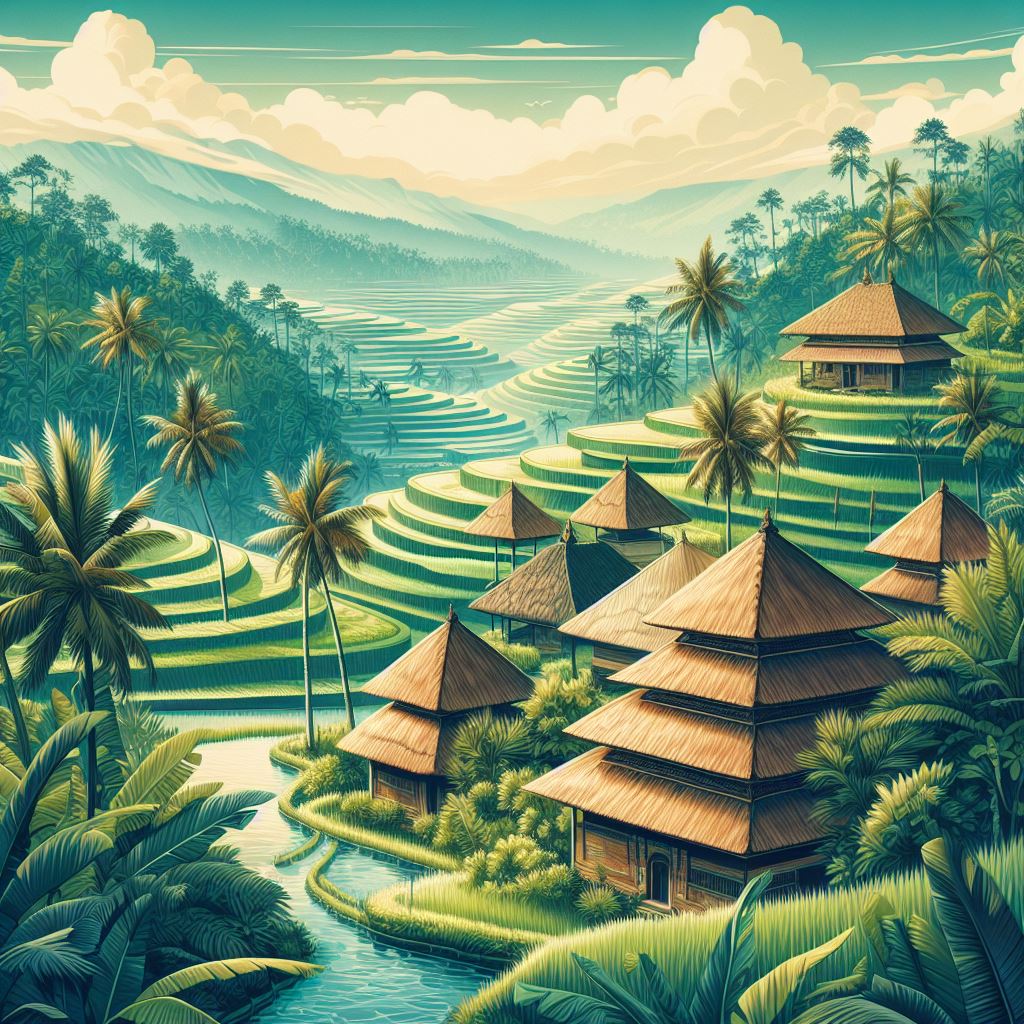
In the heart of the Indonesian archipelago lies a landscape of unparalleled beauty and cultural significance: the rice terraces of Bali. Carved into the island’s fertile hillsides over centuries of labor and ingenuity, these cascading green fields are not only a marvel of agricultural engineering but also a symbol of Bali’s rich cultural heritage and spiritual connection to the land. In this exploration, we embark on a journey to uncover the enchanting beauty and timeless allure of Bali’s rice terraces, delving into their history, significance, and the profound impact they have on the island’s people and culture.
A Testament to Ingenuity: The History of Bali’s Rice Terraces
The history of Bali’s rice terraces dates back over a thousand years, to a time when ancient farmers harnessed the island’s abundant water resources and rugged terrain to cultivate rice on a grand scale. Through a process of trial and error, they developed a system of terraced fields that allowed them to maximize the use of limited arable land while minimizing soil erosion and water runoff.
The construction of Bali’s rice terraces was a labor-intensive endeavor that required meticulous planning, cooperation, and skill. Working together in a communal spirit known as „subak,“ farmers carved stepped terraces into the hillsides, creating a series of cascading pools that could be flooded and drained as needed to control water levels and maintain soil fertility.
Over the centuries, the subak system evolved into a sophisticated network of irrigation canals, reservoirs, and water temples that ensured the equitable distribution of water and the harmonious coexistence of rice farming and religious rituals. Today, the subak system is recognized by UNESCO as a masterpiece of cultural landscape engineering and is a source of pride for the Balinese people.
Breathtaking Beauty: Exploring Bali’s Rice Terraces
Bali’s rice terraces are spread across the island, with some of the most famous and picturesque examples located in the central highlands around Ubud and the northern region of Jatiluwih. Each terrace is a work of art in its own right, with lush green paddies cascading down the contours of the hills like a series of giant steps.
One of the most iconic rice terraces in Bali is the Tegallalang Rice Terrace, located just north of Ubud. Here, visitors can wander along narrow pathways that wind through the terraced fields, offering panoramic views of the surrounding countryside and the distant peaks of Mount Agung. The beauty of Tegallalang Rice Terrace is further enhanced by the traditional Balinese „subak“ irrigation system, which creates a symphony of cascading waterfalls and glistening pools.
In the north of Bali, the Jatiluwih Rice Terrace is a UNESCO World Heritage Site and one of the island’s most breathtaking landscapes. Stretching across the slopes of Mount Batukaru, Jatiluwih is renowned for its expansive terraced fields, which cover an area of over 600 hectares and are irrigated by a network of ancient canals and reservoirs. Visitors to Jatiluwih can explore the terraces on foot or by bicycle, immersing themselves in the tranquility of this UNESCO-recognized cultural landscape.
Cultural Significance: The Spiritual Connection to the Land
Beyond their breathtaking beauty, Bali’s rice terraces hold deep spiritual significance for the island’s people, who view rice cultivation as a sacred duty and a reflection of their intimate connection to the land. Rice is not merely a staple food in Bali; it is a symbol of life, fertility, and prosperity, revered as a gift from the gods and the source of sustenance for both body and soul.
Throughout the year, Bali’s rice terraces are the backdrop for a calendar of rituals and ceremonies that celebrate the cycle of planting, growing, and harvesting rice. From the colorful processions of the „subak abian“ irrigation association to the elaborate offerings and prayers at water temples, these rituals reflect the deep spiritual bond between the Balinese people and the land that sustains them.
Preserving Bali’s Rice Terraces: Challenges and Opportunities
Despite their cultural and ecological significance, Bali’s rice terraces face numerous threats, including urbanization, tourism development, and changing agricultural practices. As the island’s population grows and land becomes increasingly scarce, pressure on the rice terraces intensifies, leading to encroachment, deforestation, and soil erosion.
Efforts are underway to preserve and protect Bali’s rice terraces for future generations through sustainable agriculture, community-based tourism, and cultural heritage conservation initiatives. Organizations such as the Bali Tourism Board and local grassroots organizations work tirelessly to promote responsible tourism practices that support the livelihoods of rice farmers while preserving the integrity of the landscape.
Conclusion
In conclusion, Bali’s rice terraces are not only a testament to the ingenuity and resilience of the island’s people but also a source of inspiration, beauty, and cultural richness. From the cascading fields of Tegallalang to the expansive landscapes of Jatiluwih, Bali’s rice terraces are a living legacy of the island’s agricultural heritage and spiritual connection to the land. As guardians of Bali’s cultural and natural heritage, it is our collective responsibility to preserve and protect these enchanting landscapes for future generations to cherish and enjoy, ensuring that the timeless beauty and profound significance of Bali’s rice terraces endure for centuries to come.





